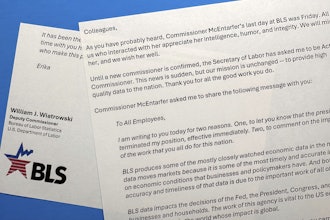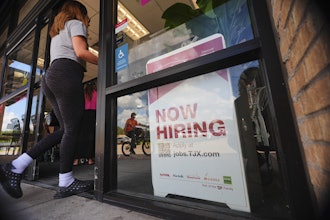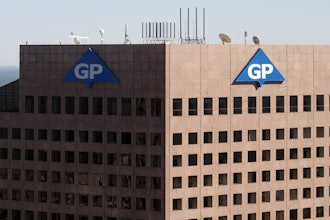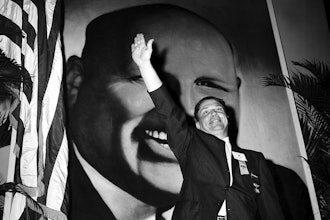
 Christina Zurek
Christina ZurekExecutives in the manufacturing industry know that engaging employees is crucial. In fact, across all trades, organizations are investing $18 billion on tools to bolster employee engagement, yet the return on these investments is unclear. According to Gallup’s State of the Workplace report, only 25 percent of manufacturing workers are engaged at work. It is the least engaged occupation across the United States and is a full eight percentage points lower than the national average for employee engagement.
Research has shown that some of the most commonly-used employee engagement initiatives are not as engaging as they can be. For example, service award recognition and company-wide physical fitness challenges are limited in their scope and impact. Similarly, if your company emphasizes work-life balance or compensation packages as the end-all for engaging employees, you’ve just hit the tip of the iceberg.
Think Beyond Traditional Initiatives
With the fast-paced shift to automation within the manufacturing industry, attracting and retaining skilled workers has never been more vital. This is due to multiple factors, including the looming knowledge shortage resulting from retirement of skilled workers as well as a highly competitive labor market where potential and current employees are more likely to leave if they are remotely unhappy in their positions. Now more than ever, it’s crucial to adopt a deeper and more dynamic approach to engagement to keep your best employees satisfied, and loyal to your organization.
Understand What Drives Employee Engagement
While engagement has been studied for years, research from Deloitte reports that just 22 percent of executives actually believe they have created an excellent and differentiated employee experience brand. So, if so many people are at a loss, what actually engages and retains employees? A recent study conducted by market research and strategy firm Chadwick Martin Bailey (CMB) sought to answer that question. Their findings reveal that there are five types of psychological benefits that, when nurtured at the organization level, drive employee engagement and retention:
- Personal identity benefits
- Social identity benefits
- Cultural identity benefits
- Functional benefits
- Emotional benefits
In its study, CMB reported that personal, social and cultural identity benefits are especially effective at engaging employees. These three types of benefits foster workers’ sense of pride, self-esteem and belonging. Initiatives that were found to particularly impact these psychological benefits were recognition and incentive programs, company communications, and employee events.
Often, organizations have focused their efforts on functional benefits–initiatives like compensation, benefits and perks like free food or convenience services. Interestingly, the research found that functional benefits are important, particularly for drawing in talent. However, they only explain about 50 percent of why an employee would actually stay with the organization. Manufacturing companies can learn from the study’s results that they shouldn’t stop at functional benefits when looking to truly inspire engagement in the workplace. Rather, employers should focus on tailoring engagement initiatives to attend to each of these psychological benefits to create deeper, more meaningful connections with their employees. Invoking these types of positive feelings in your employees creates longer-lasting satisfaction and also means that your workforce will be more likely to advocate for your organization.
Start with Gaining an Understanding of Where You Are – and Where You Want to Be
Defining your organization’s unique engagement strategy should always start with research, especially among your current employees. By asking for their feedback, you can gain insight in to your areas of strength as well as opportunities for the future. You may be surprised at the wide range of responses you receive.
Use the feedback you receive to identify and develop engagement efforts that promote a mutually beneficial employee experience that will resonate with your unique workforce. And remember, not everything needs to happen at once. An effort like this takes time to do the right way, so consider prioritization in your plan to ensure you can give the attention you need to each individual initiative.
By providing employees with the best opportunities and programs to feel supported, engaged and connected to the company, your organization can better:
- Attract strong talent and retain top performers;
- Embrace a positive company culture;
- Improve interactions with customers; and
- Boost employee engagement and fuel employee-driven advocacy.
Create Connection with Shared Purpose and Brand Messages
Consider this: when your employees purchase a new personal vehicle, they instantly become part of the manufacturer’s and dealer’s inner circle. They will receive personalized emails, phone calls, and special offers. These small connections allow manufacturers to encourage their customers to become repeat shoppers and advocates for their brand. Your employees are eager to feel this same sense of connection with your company, too.
Therefore, to optimize employee engagement, the way you explain and promote the work you do for your employees should be shared in a way that emphasizes this sense of community, aligns with your overarching brand and reinforces a shared purpose across all employees. Doing so ensures that you can achieve the following:
- Instill a strong sense of purpose in your employees and a sense of pride in the company;
- Enhance employees’ sense of belonging to your company and your company culture; and
- Drive positive emotional experiences.
Taking the time to tailor your engagement strategy to your unique workforce will differentiate your organization from the others you compete with in the increasingly competitive and volatile manufacturing labor market.
Christina Zurek is Insights and Strategy Leader at ITA Group.























